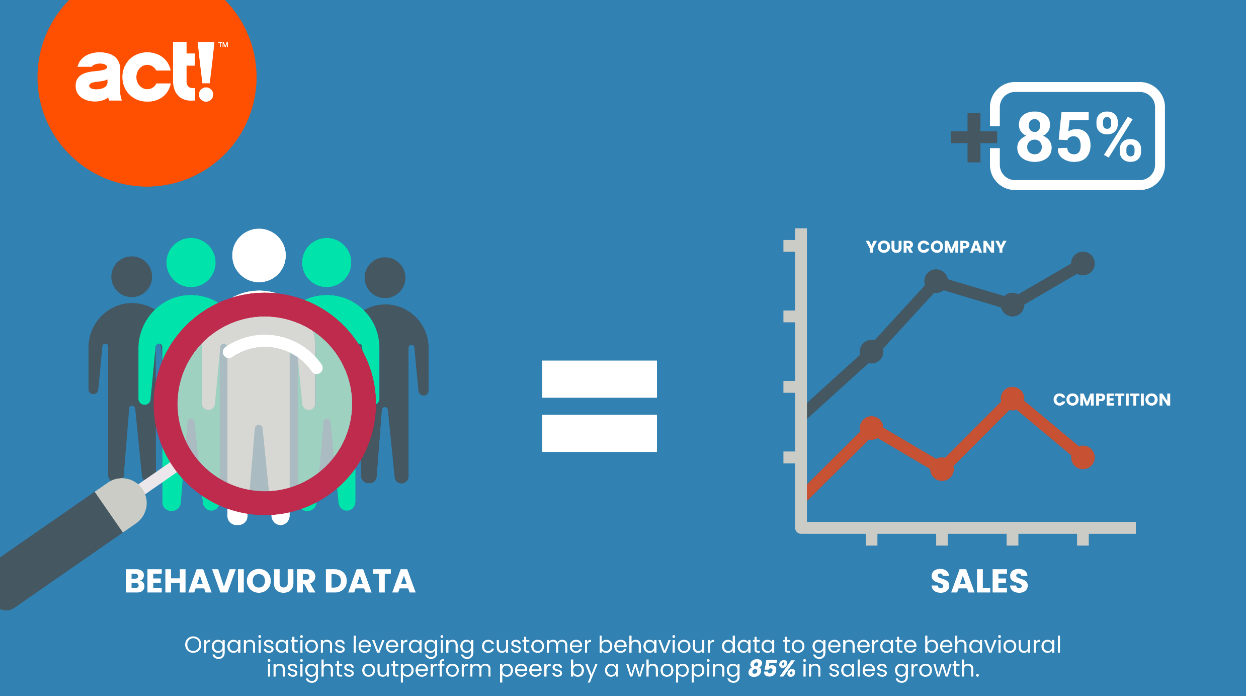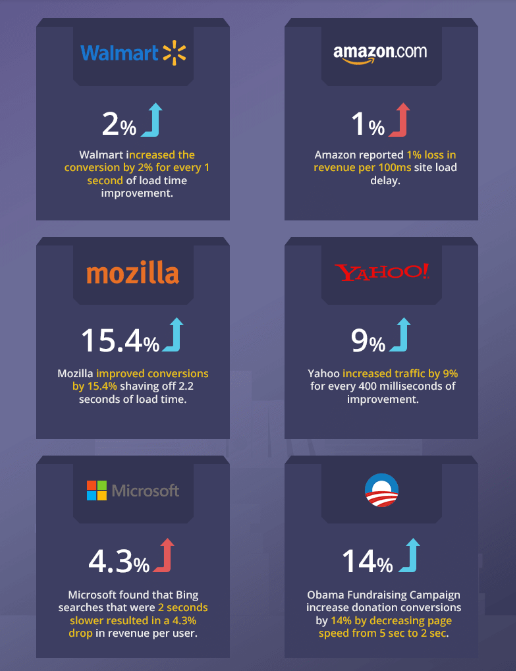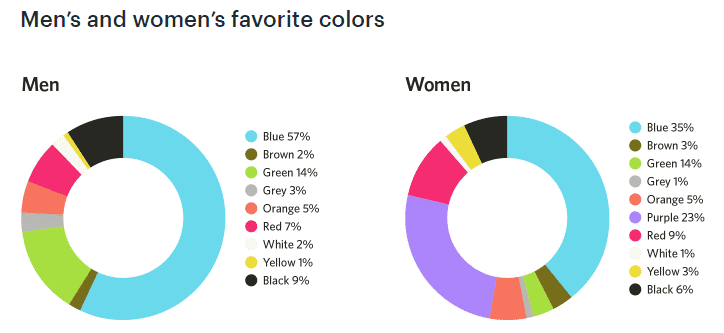How to Use User Behaviour Data to Increase Conversions
Analyse your user behaviour data to understand how people interact with your website and how this can increase sales.

User behaviour data is a method for collecting, processing and interpreting various types of user data and it helps us understand how people interact with a website or service. This method makes it possible to not just determine who these users are, but also keep track of what they do, why they do it and predict what they’ll do next.
Today, having the right user behaviour data at your disposal can make a world of difference for any business. Companies need this data so they can create suitable experiences for every one of their customers, and customers are quickly getting used to new circumstances. Lately, the quality of customer experience (CX) has become one of the most important discerning factors between brands. It’s also become one of the main reasons why people trust certain brands, come back to them, and at the end of the day, why they convert.
That’s why it’s important to catch up with how behaviour data works and how exactly it can benefit your conversions and your business in general. So let’s check out what types of information you’ll be able to extract from these data and a few tips on how to put these to work properly.
Analysing User Behaviour Data
4 Types of Data
There are many different kinds of data that should be analysed to get a comprehensive picture of your customers. Roughly speaking, we can divide all these into four basic types of raw data you’re supposed to obtain.
Once you have all this at your disposal, you can start making sense out of your collected data. Or rather, not you but super-advanced algorithms able to analyse colossal amounts of data and give meaningful interpretations.
Naturally, the quality of data you get will depend on the quality of the software you use.
Connecting the Data Points
By matching, combining and integrating these 4 types of data, you can deduce an incredible amount of information that will help you increase your conversion rates. User behaviour data can clearly highlight areas of your website and your service that are in need of improvement in this sense.
There are numerous possible problems and barriers that can hold your conversion rates back. These may be general issues like below-par content, poor design, slow page loading or targeting the wrong keywords. The issues could, however, be more specific and sometimes come down to a single page or even a single design element done wrong. In both cases, user behaviour data can help you identify problems by using a number of different methods. These methods include:
What’s more, by utilising this data you will be able to go beyond just understanding overall trends in user behaviour and detecting specific technical problems. Namely, user behaviour data can help you predict an individual’s future behaviour based on his or her specific past behaviour.
This allows companies to personalise the experience of each and every customer in ways that weren’t imaginable until recently. And personalisation has become a standard that needs to be fulfilled. Research by Epsilon indicates that 80% of consumers are more likely to buy from brands that offer personalised experiences.
Having the right data is just the first step to fixing problems that hinder your conversion rates and improving customer experience.
Let’s see how these data can be put to work in more detail.
Putting Data Into Action
Fixing Technical Issues
Sometimes, poor conversion rates are due to very simple technical reasons and don’t demand especially complex interpretations. Unusually high bounce rates at certain pages can suggest bugs and errors you weren’t aware of. And if these bounce rates apply to most of your pages, there’s a wide array of different technical and non-technical problems that may be causing them. One of the most common ones is page loading speed.
In other words, if you don’t seem to have any other particular technical problems with your website, it may just be too slow. It’s not too surprising to hear that users don’t plan to spend their days staring at loading bars nowadays. In fact, a one-second delay in loading a page can cause a 7% drop in conversions.
On the other hand, speeding up your website can have the opposite effect. Numerous studies suggest this. For instance, Walmart increased conversions by 2% for every second of load time improvement, Mozilla’s conversions were boosted by 15.4% after speeding uploading by 2.2 seconds, and similar results were noted by giants like Amazon, Microsoft, and Yahoo.
Looking at user behaviour data can also help you discover the cause of slow page loading. If bounce rates are high only for specific pages, you should test these specific pages. If they fail the speed test, you’ll know which exact pages need to be fixed or simply better optimised.
Fixing UX issues
Very often, user experience (UX) is a huge factor in establishing healthy conversion rates. Obviously, UX issues are often just technical issues that badly affect the visitors’ experience. But sometimes, your website may technically be perfectly fine and yet completely hopeless and unusable, which will inevitably make conversion rates plunge.
This may be due to different causes, such as confusing layout, counter-intuitive navigation, an overabundance of unnecessary design elements, or because of some very specific details, like the colour of the Click to Action (CTA) button or the number of fields in opt-in forms.
In any event, well-processed behaviour data can help you find out.
You can use all kinds of heat maps or full session replays to determine where and why people struggle with using your website. Try using some more advanced metrics, like rage clicks, bird’s nest or dwell time. These will show where the bursts of clicks and taps that suggest frustration were detected, or where exactly on your website users tend to spend the most time seemingly inactive, probably trying to figure out what they’re supposed to do next. Pages that provoke this kind of user behaviour definitely need improvement in the UX department.
A great illustration of how you can use data to improve UX details is the case study of nameOn, a company that sells personalised gifts. They noticed a discrepancy between the add-to-cart page and the checkout page – as much as 31.7% of those who added products to their carts never started the checkout process.
They used heatmaps to pin the problem down and did it successfully. After a round of testing, they were able to deduce that some of the CTA buttons distracted and confused users. Heatmaps also pointed to the exact parts of the page that get the most attention. Now they could eliminate the unnecessary CTA buttons and place the “continue to checkout” one at the most suitable place. This generated a substantial increase in conversions and a revenue boost of 11.4%.
Personalised Recommendations
Modern technology has influenced customer experience in many different ways, and product recommendations are everyday examples.
It’s obvious for consumers, as we realise algorithms that recommend us videos, songs, products or TV shows sometimes know what we want better than we know it ourselves. It’s also obvious for companies. Big corporations like Amazon or Netflix drive huge revenues based on the efficiency of these algorithms.
Namely, these recommendations are responsible for one-third of Amazon’s sales and 75 percent of Netflix viewer activity. They open amazing up-sell and cross-sell opportunities, thanks to machine learning and analytics capable of predicting the consumers’ interests, needs, and upcoming decisions.
Now, in order for this algorithm to be useful at all, companies need all the user behaviour data they can get. And they need it in real-time. There are many different kinds of data that can be extremely useful for recommendation software, such as users’ purchase history, browsing history, items they looked at or liked, items that are already in their cart, or items purchased by others with similar interests and purchase history.
These recommendations can be put forward to users even when they leave the site. Sending trigger-based special offers and recommendations by email can do wonders for your conversions. They have to be relevant though, otherwise, they’ll only do wonders for your unsubscribe rates.
What seems to be working well, for instance, is automatically reminding users of items they originally had in the cart but decided not to buy. Around 5% of people who receive this kind of follow-up email will return to purchase the product. Of course, if you add a little discount or offer free shipping you’ll probably see this percentage get substantially higher.
Personalised Content
As it was already pointed out, the impact of personalised experiences on conversions and sales is huge. Consumers are starting to recognise when they’re offered generic experiences and easily lose patience if they encounter a website that isn’t built to suit their individual needs.
A significant aspect of personalised experience is personalised content. Once a user ends up on your website, it’s very important what kind of content they’ll initially come across. For instance, you shouldn’t be showing the same content to first-time visitors and returning customers.
New customers should see more general info about your brand in order to get familiar with it, while regular visitors can only get annoyed by such content. Furthermore, new visitors should be especially encouraged to sign up for your mailing list, while urging those already signed up to sign up is a waste of time, resources and their patience.
Also, the content should be customised based on referral traffic. If a user ended up at your website by clicking on a product offer they came across on social networks or another website, they shouldn’t land on your homepage and look for what they need all by themselves. With relevant user behaviour data, you can determine how a particular user has arrived at your website, and land them on a relevant section or a specific product page.
A good example of how this works is the case of Tokeo – a Polish local service that connects businesses and individuals with expert advisors from different fields. Initially, they used to have all the visitors land on the same page, regardless of which specific kind of expert a visitor needed. Afterwards, they made 11+ of these specific landing pages and they all converted better than the original one. These pages performed 40-700% better, only because they featured a particular kind of expert the user was looking for.

Adapting Your Messages
Another aspect of personalisation tactics that can be done based on user behaviour data is the adaptation of the marketing messages that you send out.
Firstly, this goes for particular messages that you send to particular users. For example, the mentioned follow-up email should be tailored to fit the demographics and interests of whoever you’re addressing. User behaviour data can tell you a lot about what provokes them to act or buy and you should use these to your advantage.
The same goes for your retargeting campaigns and other ads placed all around the online realm. With the right user behaviour data at hand, you can choose between different designs and messages that will fit the profile of a specific user. Retargeted visitors are 70 percent more likely to convert on a retailer’s website, and that is something you should have in mind.
Secondly, you can also utilise this data when creating broader marketing strategies. You’ll be able to find out quite a lot about your customers which may make you reconsider some aspects of your overall marketing strategy and messages your brand sends out. You’ll have a better idea about what drives your customers, what attracts them and what triggers them.
In general, these data will help you target the right audience with the right messages, which will affect some of your key metrics. Naturally, there will be proportionally fewer people who end up at your website by pure chance, possibly completely indifferent to your brand. Thus actually attracting people who are interested in your company and your products to your website will surely do good things for your conversion rates in the long run.
Conclusion
Having accurate user behaviour data is the present and the future of doing business virtually anywhere in the world. This shouldn’t come as a surprise – knowing your customers has always been especially beneficial in any industry, it’s just that now it’s easier than ever to collect valuable customer info.
Finally, the algorithms that are trying to figure out behaviour patterns are only getting more powerful and more subtle, and this will make them increasingly useful for companies of all kinds. Very soon, possessing relevant user behaviour data won’t be a handy additional business acquisition – it will become a necessity.
Really Simple Systems is now Spotler CRM
The same great technology, a CRM platform that is focused on the needs of B2B marketers, provided by the same great team, at a great price!


